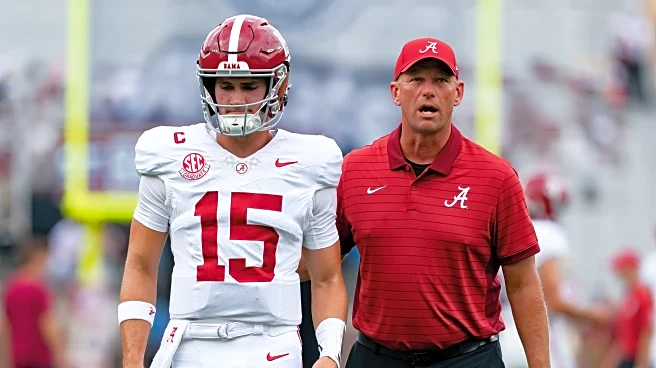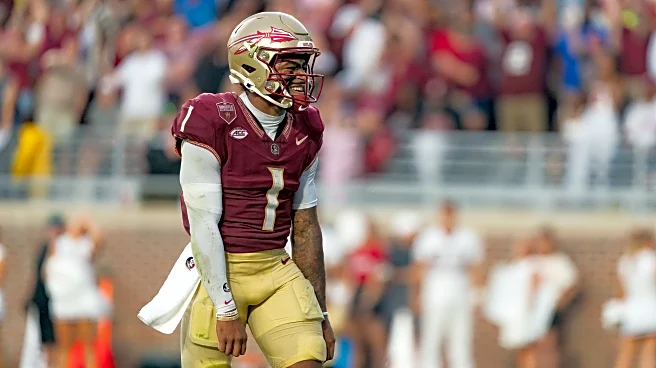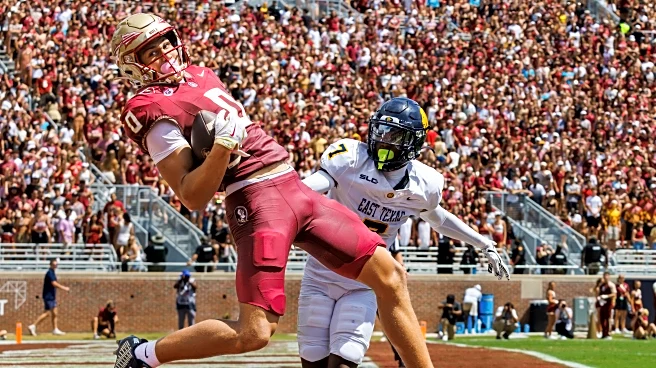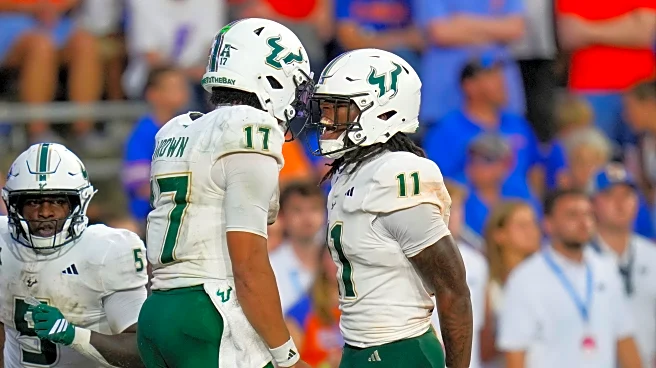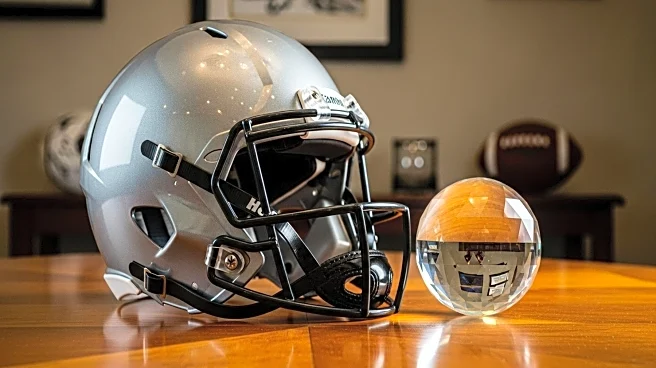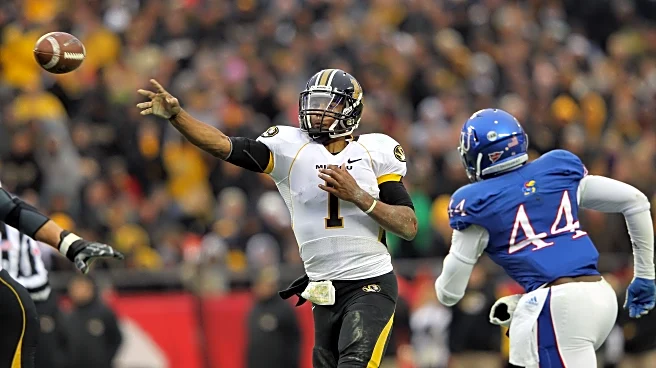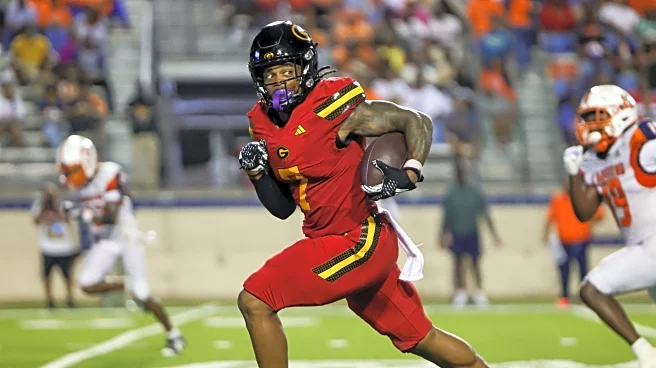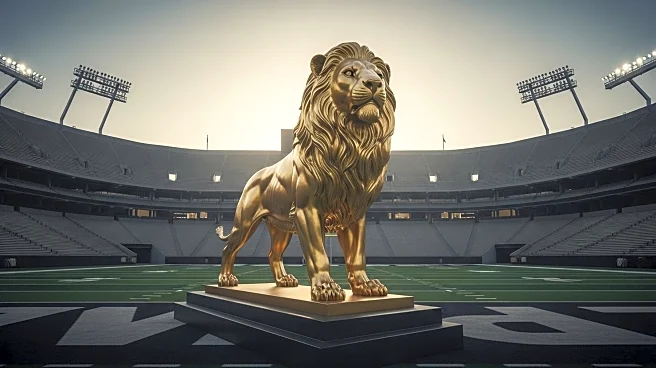What is the story about?
What's Happening?
In a series of college football games on September 6, 2025, several teams experienced significant halftime deficits. Notably, Minnesota led Northwestern State 59-0, Florida State was ahead of East Texas A&M 49-0, and Texas Tech led Kent State 48-0 by halftime. Grambling State faced a challenging matchup against No. 1 Ohio State, resulting in a 70-0 loss. Grambling State's coach, Mickey Joseph, acknowledged the disparity in resources and scholarships between the teams, highlighting the financial motivations behind such matchups. Ohio State paid Grambling State $1 million for participating in the game. Other notable halftime leads included Alabama over Louisiana-Monroe and Tennessee over East Tennessee State.
Why It's Important?
These games underscore the financial dynamics in college football, where smaller programs often face powerhouse teams in exchange for substantial payouts. This practice, while financially beneficial for smaller schools, often results in one-sided contests. The financial incentives help support athletic departments of smaller schools, but the competitive imbalance raises questions about the fairness and sportsmanship of such matchups. The significant payouts, such as Alabama's $2 million to Louisiana-Monroe, highlight the economic disparities within college sports.
What's Next?
The trend of scheduling games between major programs and smaller schools is likely to continue, driven by financial incentives. However, there may be increasing scrutiny and debate over the ethics and impact of such lopsided matchups. Stakeholders, including athletic directors and conference officials, might explore ways to balance financial benefits with competitive fairness. Additionally, the outcomes of these games could influence future scheduling decisions and discussions about the structure of college football competitions.
Beyond the Headlines
The financial arrangements in these games reflect broader issues in college athletics, such as the distribution of resources and the role of money in sports. These dynamics can affect recruitment, player development, and the overall competitiveness of college football. The reliance on financial guarantees from larger programs may also impact the long-term sustainability and strategic planning of smaller athletic departments.
AI Generated Content
Do you find this article useful?


